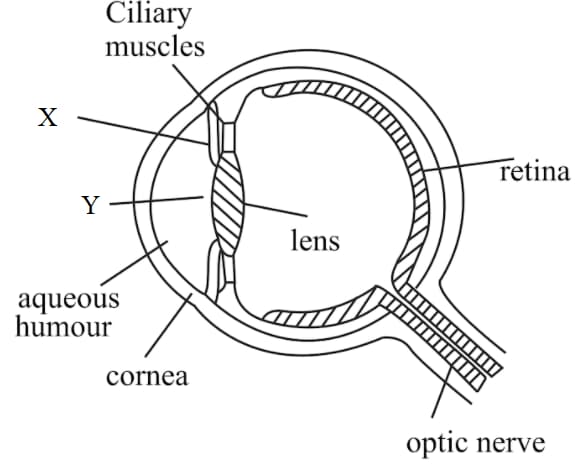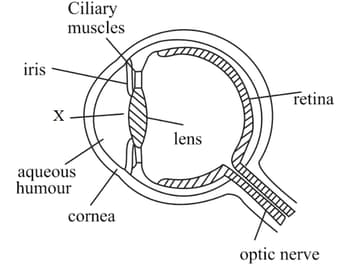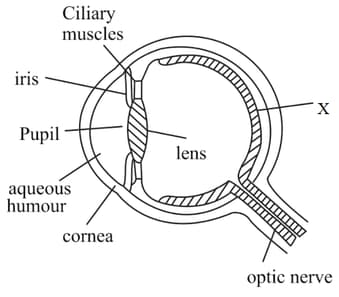Simple Camera and Human Eye
Simple Camera and Human Eye: Overview
This topic covers concepts such as Far Point, Common Defects of Eyes, Myopia, Hypermetropia, Correction of Myopia, Correction of Hypermetropia, Human Eye, Pupil, Cornea, Retina, Power of Accommodation, Least Distance of Distinct Vision, etc.
Important Questions on Simple Camera and Human Eye
Increase in the converging power of eye lens cause hypermetropia.
The processing of photos in a camera and a human eye is the same.
Compare and explain the processing of photos in a camera and a human eye.
Compare the image formation in a camera and a human eye.
A camera and a human eye work in a similiar way.
How does a camera and a human eye work? Is there any similarity?
What does f number and aperture time in a camera mean?
Define the size of the aperture of a camera.
Explain the working and structure of camera.
The structure of human eye is given below. The part labelled as "X" and "Y" in the diagram are respectively pupil and iris.

The structure of human eye is given below. The part marked as "X" in the diagram is _____.

The structure of human eye is given below. The part marked as "X" in the diagram is _____.

Explain the structure and functioning of Human eye.
The far point of a human eye can change with age of the person because of the weakening of _____ and decreasing ability to change the focal length.
What are the far point and near point of the human eye with normal vision?
The far point of a human eye can change with age of the person.
The far point of a normal eye is:
What is the nature of the image formed by eye lens? (Choose from the following: Real / Virtual)
Which pigment gives the iris a dark colour?
The range of vision of a normal human eye is from to infinity.
